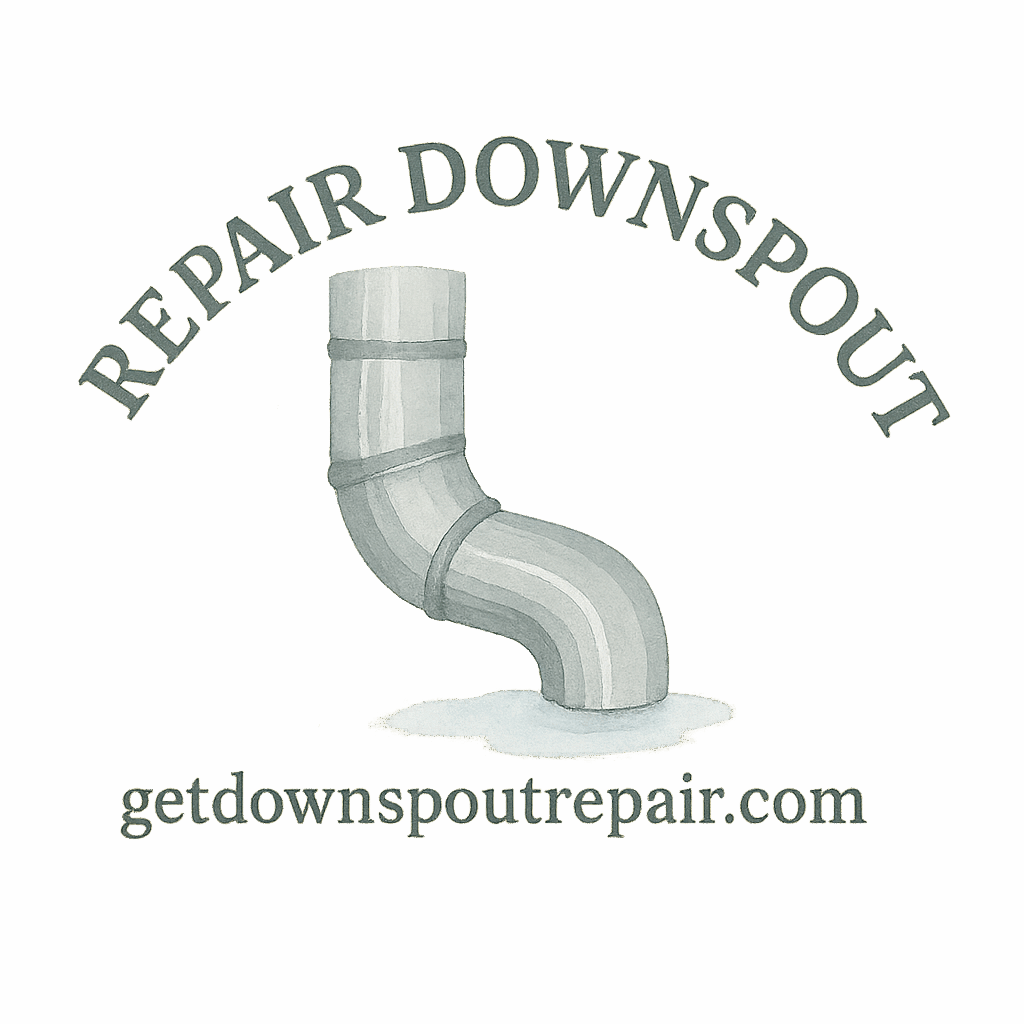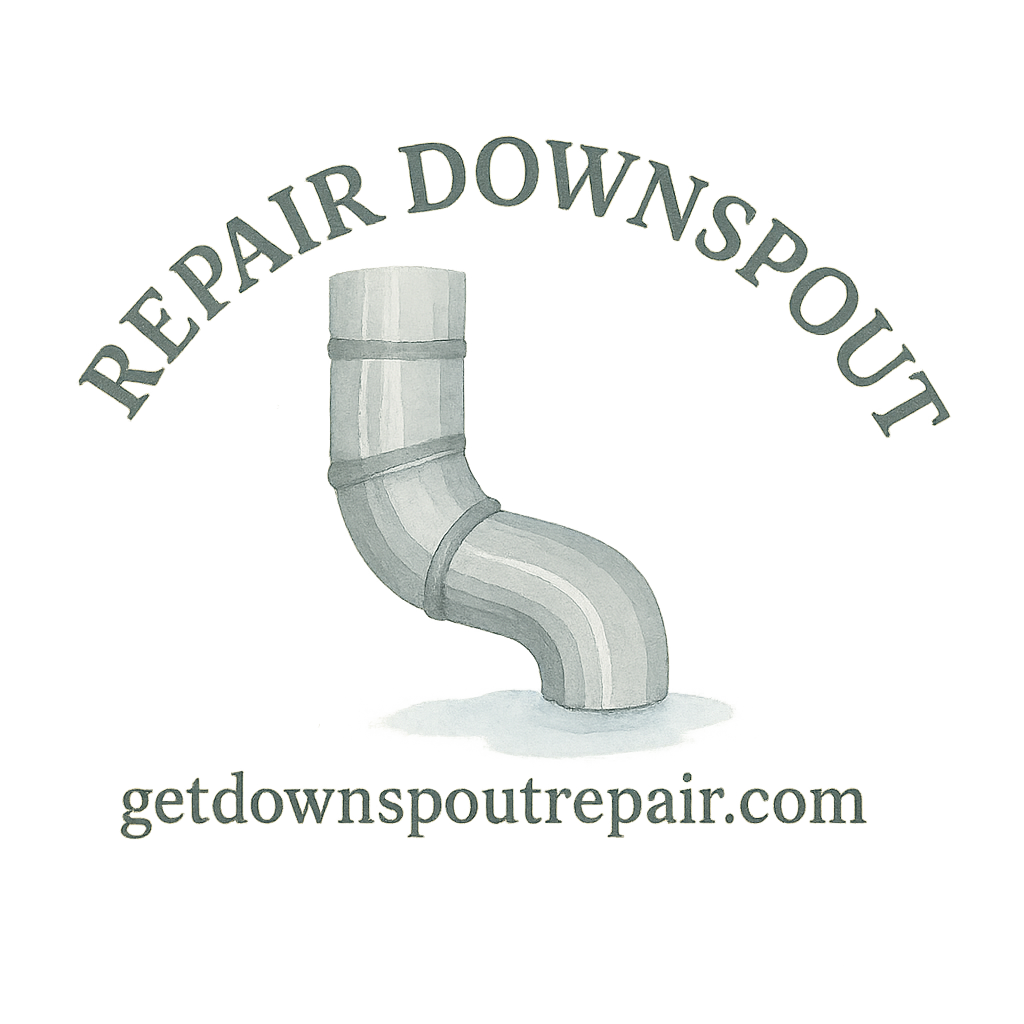Introduction
Winter can be brutal—not just on us but also on our homes. If you’ve ever noticed ice hanging from your gutters or water pooling near your foundation after the snow melts, chances are your downspouts have taken a beating. Ice damage is one of the most common yet overlooked problems that can wreak havoc on drainage systems. The good news? You don’t always need to hire a professional to fix it. With the right approach, there are several DIY downspout repair methods that can save you money, protect your property, and keep your gutter system working like new.
In this guide, we’ll cover 7 DIY downspout repair methods to handle ice damage effectively. By the end, you’ll know how to tackle everything from cracks to clogs while preventing future issues.
Understanding Ice Damage in Downspouts
Why Ice Builds Up in Downspouts
Ice forms in downspouts when melting snow refreezes due to poor drainage or low temperatures. If your gutters aren’t properly sloped, or if they’re clogged, water can collect and freeze. Over time, this creates blockages, cracks, and even structural damage.
Common Signs of Ice Damage
Not sure if your downspouts are suffering from ice damage? Here are a few telltale signs:
- Bulging or cracked sections of the downspout
- Water leaking through seams or joints
- Sagging gutters or misaligned pipes
- Pooling water near the foundation
If you spot these issues, it’s time to take action before the damage worsens.
For more basics, check out this detailed downspout repair guide.
Tools and Materials You’ll Need
Essential DIY Downspout Repair Tools
Before diving into the methods, gather these tools:
- Screwdriver and pliers
- Hacksaw or tin snips
- Caulking gun with waterproof sealant
- Heat gun or kettle (for ice melting)
- Measuring tape
- Replacement downspout sections
You can find a full checklist of DIY downspout repair tools here.
Recommended Safety Gear
Safety should always come first. Equip yourself with:
- Heavy-duty gloves
- Safety goggles
- Non-slip boots
- A sturdy ladder
7 DIY Downspout Repair Methods to Handle Ice Damage
Method 1: Clear Ice Blockages with Hot Water
A simple way to start? Pour hot (not boiling) water directly into the downspout to melt the ice blockage. You can also use a heat gun for stubborn clogs. Just avoid using sharp tools like hammers or chisels—they’ll cause more harm than good.
Method 2: Use a Gutter De-Icing Cable
De-icing cables are a lifesaver in freezing climates. Install them inside the gutters and downspouts to prevent ice from forming in the first place. This proactive fix helps minimize long-term damage.
Method 3: Seal Cracks and Leaks with Waterproof Sealant
Cracks and small holes are common after ice expansion. Apply a quality waterproof sealant to these weak spots. This quick fix keeps your system watertight and extends the lifespan of your downspout.
Method 4: Reinforce Loose Joints and Connections
Ice can push joints apart. If you see loose connections, use screws or rivets to secure them back in place. A little reinforcement goes a long way in preventing leaks.

Method 5: Replace Damaged Downspout Sections
Sometimes, the damage is too severe for sealant. If sections are bent or cracked beyond repair, cut them out and replace them with new ones. You’ll find budget-friendly replacement options in downspout repair cost guides.
Method 6: Install Extensions to Divert Water Safely
Ice damage often worsens when water pools near the foundation. By adding extensions, you ensure water is carried further away from your home, reducing the risk of freezing back into the system.
Method 7: Improve Drainage to Prevent Ice Build-Up
Finally, consider improving your yard’s drainage. Adding gravel, underground piping, or splash blocks helps water flow away smoothly. Learn more in this detailed drainage protection guide.
Preventing Future Ice Damage
Regular Gutter Cleaning
Clogs are the number one reason ice forms. Make a habit of cleaning your gutters at least twice a year. For more tips, visit gutter cleaning advice.
Insulating and Protecting Downspouts
You can also insulate your downspouts with foam covers or install gutter guards. These small investments can save you from major repairs down the road.
When to Call a Professional
Recognizing Severe Structural Damage
DIY is great, but sometimes the problem is bigger than it looks. If your downspout is detached, split in half, or causing water damage inside your home, call in a pro.
Benefits of Professional Downspout Repair
Professional contractors bring specialized tools and experience. They can spot hidden damage and provide lasting solutions. If you’re unsure where to start, check professional repair help.
Cost Considerations of DIY vs Pro Repair
DIY repairs typically cost less upfront since you’re only buying materials. However, if mistakes happen, you may end up paying more in the long run. Professional services cost more but come with warranties and peace of mind. A detailed breakdown is available here: costs and materials guide.
Conclusion
Ice damage doesn’t have to spell disaster for your home. With these 7 DIY downspout repair methods, you can handle most problems yourself, saving time and money. From melting blockages to replacing sections, the right approach depends on the extent of the damage.
Remember: prevention is key. Regular maintenance, insulation, and drainage improvements will keep ice from becoming a recurring issue. But if things get out of hand, don’t hesitate to call a pro.
By staying proactive, you can protect your home from water damage and extend the life of your gutter system.
FAQs
1. Can I use salt to melt ice in my downspout?
No, salt can corrode metal downspouts and damage your lawn. Hot water or a de-icing cable is safer.
2. How do I know if my downspout needs replacing instead of repairing?
If you see large cracks, crushed sections, or detached joints, replacement is usually the better option.
3. How often should I check my downspouts in winter?
Inspect them after major snowfalls and freeze-thaw cycles to catch issues early.
4. Are gutter guards effective against ice damage?
Yes, they help prevent clogs that contribute to ice buildup, but they won’t stop freezing entirely.
5. Can I install downspout extensions myself?
Absolutely! Most extensions are designed for easy DIY installation.
6. Is it safe to use a heat gun on downspouts?
Yes, as long as you keep it at a safe distance to avoid warping the metal or plastic.
7. What’s the biggest risk of ignoring ice damage in downspouts?
Water can overflow and cause costly foundation damage, wood rot, and even basement flooding.


